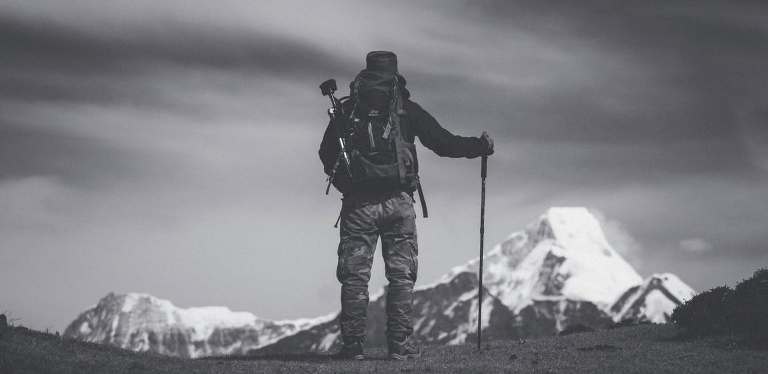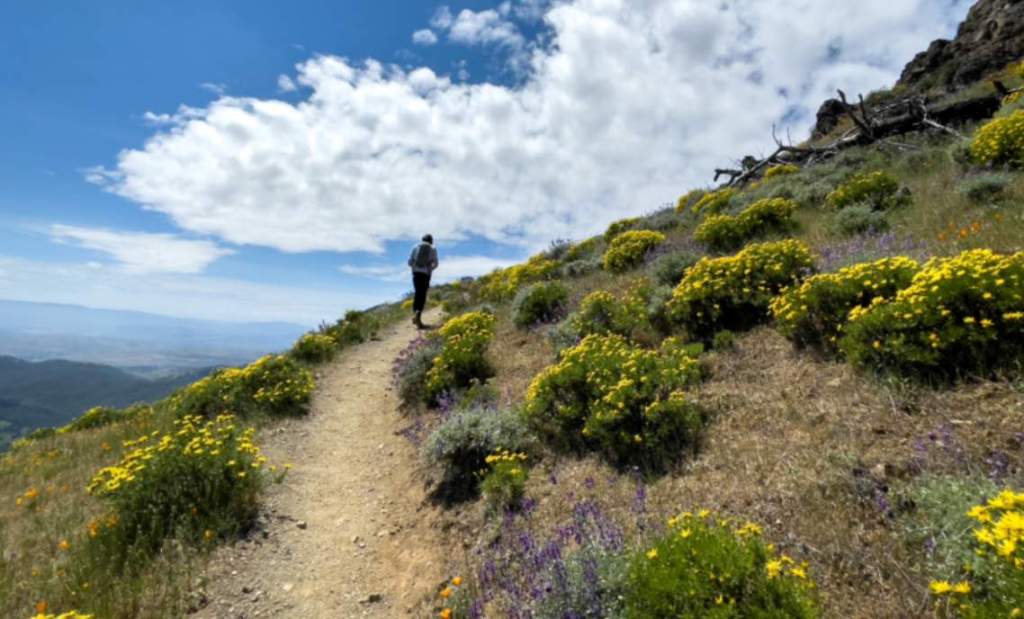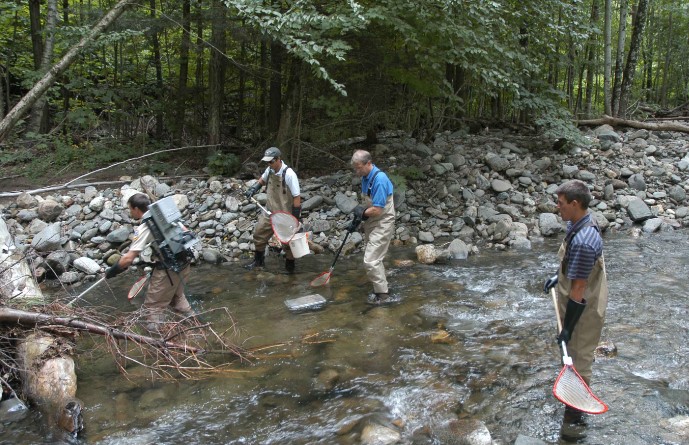Tips for Campers on Foot Comfort – Fishing, hunting, or camping can be ruined by sore, blistered, aching, or cold feet. First, let’s take a look at a few old-timers’ tips for warm-weather foot comfort. To begin with, wool socks that fit should be as heavy as possible. These boots absorb shock, abrasion, and perspiration, so all real woods guides and experts wear them. Also, it is important to wear shoes that are as heavy as possible and fit well, including insoles for extra support and better grip.
They ease fatigue and shocks, as well as tired, bruised feet. To ensure comfort, it is equally important to keep your socks clean and your feet clean. Hygienic footwear keeps your feet in tip-top shape and prevents several discomforts.
As the next step, pay immediate attention to blisters, chafed areas, corns, and calluses. A wide range of illnesses will result if this is not done. We’ll go through them in the order listed above. All experienced woodsmen wear those soft, pure all-wool, heavy socks when in the woods, afield, canoeing, and on the water.

Foam cushions the top and bottom of the feet, as well as the forefoot and aft foot. Their purpose is to absorb friction caused by shoes. They absorb the shock and bruises caused by stones. Your boots and socks retain their warmth even when they are wet since they absorb perspiration.
Always keep a few pairs of clean, dry socks with you so you can change them whenever necessary. There should be no excessive length or shortness in socks. The longer they are, the more wrinkles and creases they get. Having toes that are too short causes aches and crowding of the toes.
There will be no problem with the width. So choose socks that fit comfortably, with an easy length but not too long. It is better to choose heavy, “hand-knitted” wool, preferably not too tightly knitted, and soft wool, if possible. Natural un-dyed colors, such as grey, white, and heathers, are the best.
It is common for tender-footed people to consider wood socks too heavy, but they will feel so much better in them. The hikes he makes are far more efficient, easier, and farther than they used to be, even on the hottest days. Compared to thin cotton socks, he’ll be converted for life if he’s exposed to blisters, cold feet, chafed feet, sweaty feet, and other discomforts.
Make sure you size up your footgear according to your hunting shoes at your dealer’s by putting on a pair of heavy wood socks over your ordinary socks. Ideally, your shoes should feel comfortable with your civilian socks under your woods hose, not too tight or too loose. You should evaluate comfort by standing and taking a few steps, not by sitting.
There will be just enough padding in the outing pair so that your feet will not swell from sustained tramping in the woods. It is not a good idea to choose hunting or hiking boots that are too long. Having them on for long hours in a boat can be incredibly uncomfortable, as they bind the upper calf. For everyday use in the woods, six to eight-inch boots are sufficient, and twelve-inch boots are still comfortable, but anything higher is a mistake unless you have to wear higher boots in a snake-infested country.
To ensure that your city-soft feet are protected from trail rocks, roots, etc., the soles should be heavy enough to provide sufficient protection. Shoes that are too large cause blisters due to friction, but shoes that are too small cause blisters from compression, which cannot be remedied by wearing loose socks under heavy ones.

However, cramping shoes cannot be made comfortable by wearing thin socks under them. When too-large shoes are inserted with an innersole, sloppy fits can often be completely resolved. You should wear shoes that are fully forward, but the heel should be as snug as possible. Lacing them too tight over the instep will prevent them from fitting properly. As soon as the pronghorns are pressed, they run sixty miles per hour.
Neither North nor South America has a faster animal than this antelope. When running long distances, it can reach speeds of 40 mph. When hiking long distances, or even on medium hikes, clean feet, and clean socks make a big difference!
Foot discomfort and infection in cuts or sudden blisters are prevented by washing feet and socks daily to remove the byproducts of perspiration. A quick hike requires time constraints, so if you have to choose between clean feet or clean socks every day, pick the clean socks! The comfort and morale of soft clean socks can’t be matched, let alone their aesthetics!
Moreover, be careful with several types of fungi that can affect your trip. That is one kind of toenail fungus, which develop quickly. Therefore, under your fingernail or toenail tip, it appears as a white or yellow-brown spot. Fungal infections may cause the nail to discolor, thicken and crumble at the edge as they progress. There are several nails that can be affected by nail fungus.
Your whole trip can be ruined by blisters, callsouses, corns, and tired, aching feet, even if you have the best equipment, transportation, licenses, and guides. Taking a few weeks of treatment from a good chiropodist before you go on a woods trip is a good idea if your corns or callouses are in bad shape.
You would enjoy this more and pay little for it compared to what you would gain. The minute you notice an irritated spot, apply a strip of adhesive tape or a Band-aid to prevent blisters. An awl, needle, or pin sterilized in a match flame should be used to open blisters that have already developed.
In order to treat the blister, a thin layer of absorbent cotton can be placed over it, with surgical gauze resting directly on it. Then, adhesive tape can hold the cotton in place, or a band-aid can be applied directly to the blister, covering the treated area. By wrapping a Band-aid around the irritated spot around the toe, or a small layer of cotton around the toe, you can prevent blisters from forming between the toes.
If you experience chafing or friction, you can typically soap both the shoe and sock where they rub, alleviating the discomfort and preventing blisters. The foot will become tender if it is soaked in hot water.
It is important to use toughening foot powder instead of softening foot powder. All wood boots should not have soft soles or spring heels for the average city man. Using a leather innersole can avoid all the discomfort of rubber bottoms, even if you like rubber bottoms.

A lot of shocks and bruises are also taken up by this. There are often rough spots on seams, soles, or heels on shoes, and you can use a rounded stone to smooth them down by tapping the outside of the shoe over the spot as you pound it down with the stone. The best footgear for ice fishermen is the Cold Weather Foot-Comfort Felt Boot with a rubber bottom.
One medium pair of pure wool socks and one heavy pair of pure wool socks will keep your feet warmer than one heavy pair of socks. In order to prevent the pervasive wetness of melting snow, rubber bottoms are the only ones you can use. Ice fishing in most conditions can leave your feet wet, even with the best “waterproof” leather. Pure wool socks are the only ones that really keep you warm, as they contain no wool fillers, grease, or other non-insulating additives. It’ll tingle with warmth for hours if you rub your feet with snow in a warm room before going out.
In the case of inadequate foot circulation, try the above before going out, and wear thin wool socks next to the feet, a medium pair over these, and then a heavy pair over these. A tight-fitting boot causes more cold feet than too little coverage, so make sure your boots can handle all this covering easily.
It is often best to change your socks at noon, particularly if your feet sweat freely, in order to keep your feet warm for the remainder of the day. When you wear waterproof footwear, how do you keep your feet warm? If you prefer, you can float your feet (inside your boots, of course) in a pond! Water never drops below 32°, regardless of the temperature in the air!
Read More – The Bastakiya in Dubai







